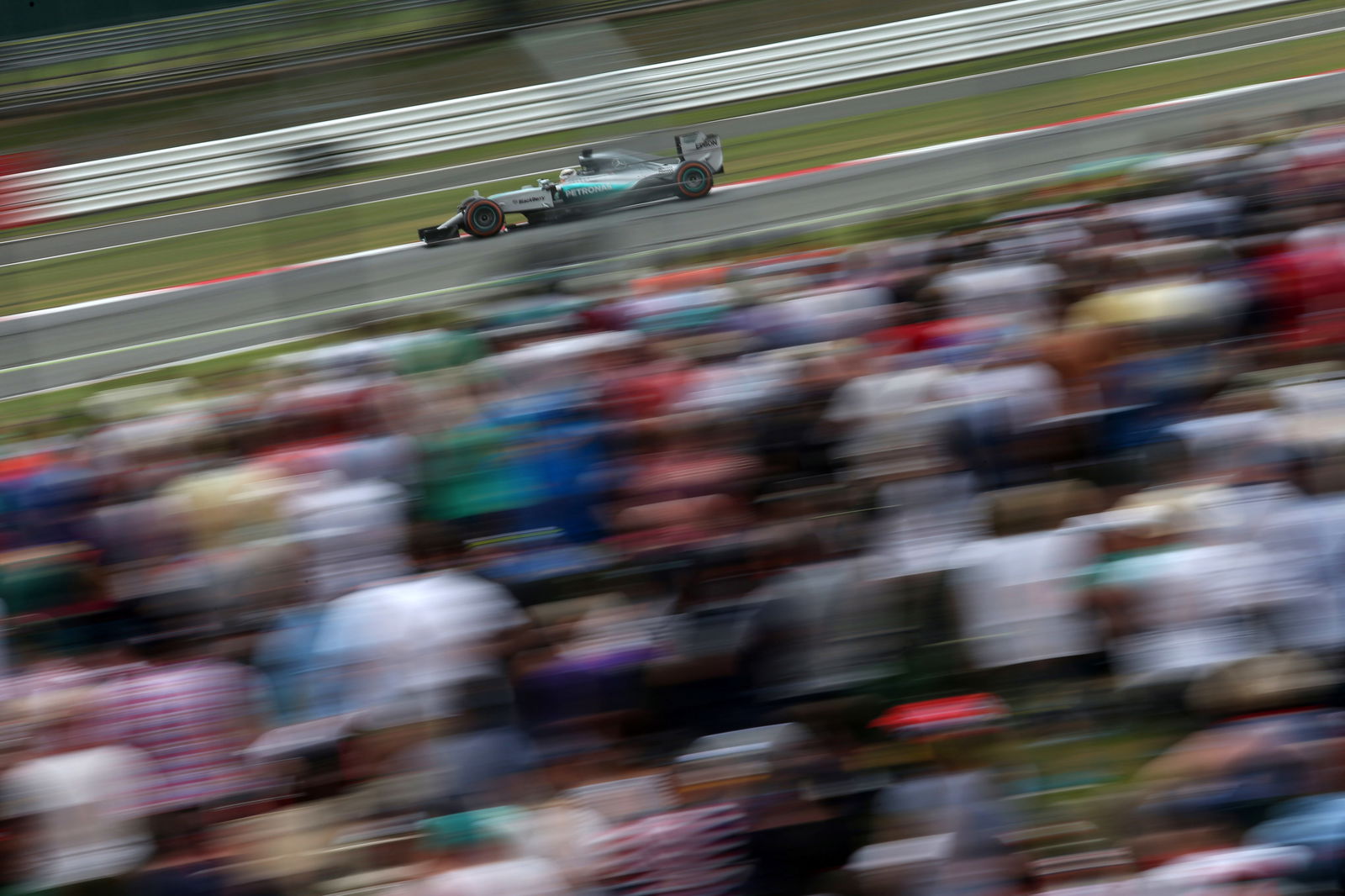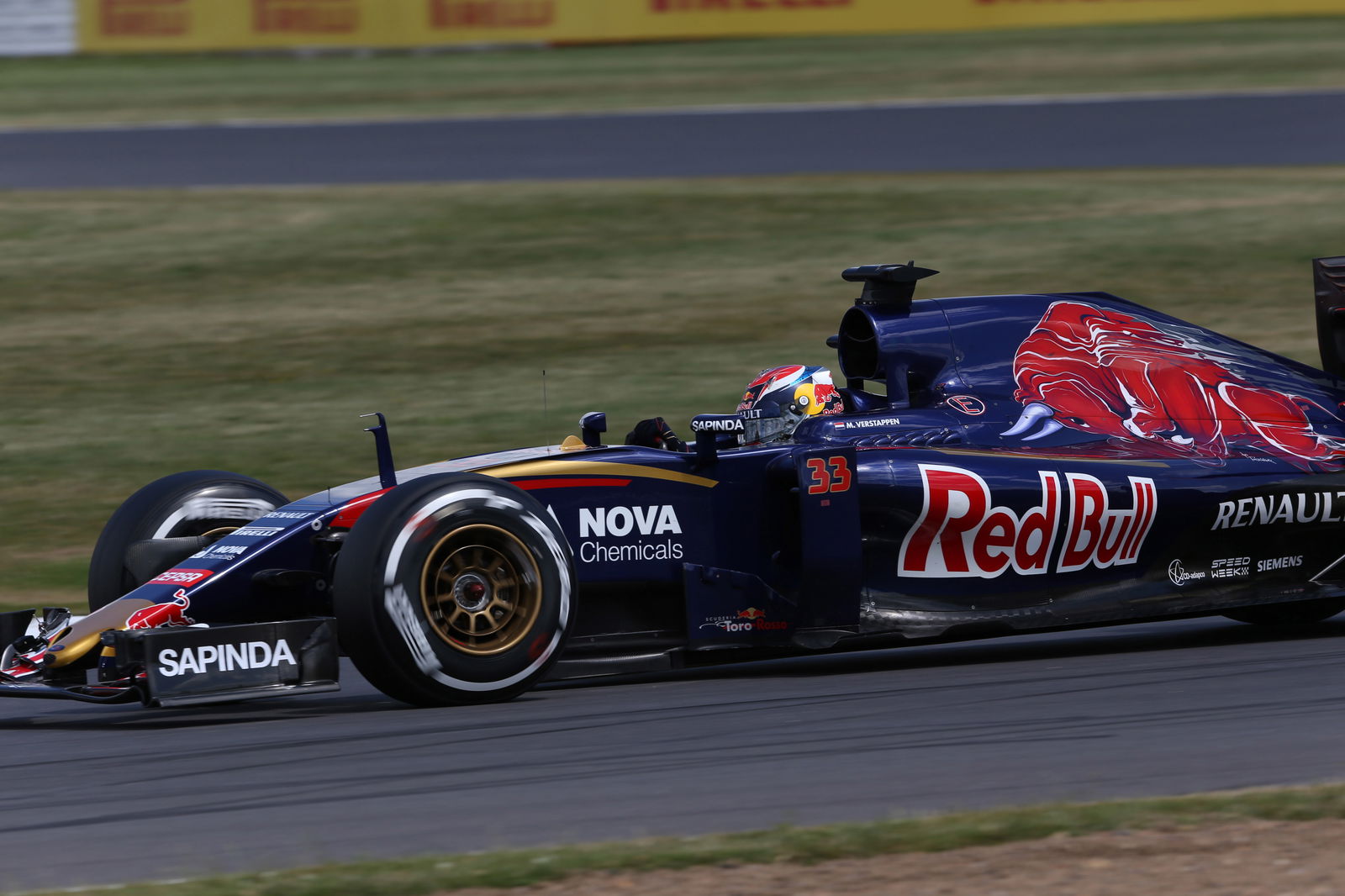F1 British Grand Prix: Max Yamabiko: Less talk, more torque

Here's a question: How can F1 cars be made more dangerous?
Simple. Point a spike from the centre of the steering wheel straight at a drivers face and tell them to get on with the driving. That should, as Niki Lauda candidly puts it, make the drivers 'crap their pants'.
OK, so this is not what Kimi Raikkonen meant when he told French television that he would like to see a bit more of the challenge - or as he referred to it 'danger' - re-introduced to F1, but his words have created something of a talking point in the paddock, with some siding with the experienced Finn and others insisting it is plenty 'risky' enough.
Perhaps the more succinct interpretation of the 'danger' factor was coined by Lauda, who said "There's too much control, too many rules and no more characters. I'm not saying that we should neglect safety. But if the cars were faster, the thrill for the drivers and the spectators would automatically increase."
They are to an extent both right and both wrong, danger, or the perception of danger is part of Formula 1 and all top level racing. Right now that perception seems to have gone, despite the fact that one driver, Jules Bianchi, is still fighting for his life after a crash last year at Suzuka.
What both Raikkonen, Lauda and others are calling for are major changes to the cars to make them much, much harder to drive. Many in the media and in the paddock have said that the way to do this is to give the engines more power, but if the aim is to introduce a greater challenge, adding more power is not the way forward... the power units need more torque. A lot more torque.
Indeed, If you want to make the cars harder to drive give them lots more torque and a lot less grip. It is torque rather than power that gives the cars that tyre shredding wheelspin and prompt a clumsy driver to loop it coming out of a slow corner, not power.
The best way to achieve the first of these two goals and still meet Formula 1's long term objectives is not one that I have seen proposed elsewhere. Simply make the hybrid system a lot more potent, but make them a whole lot harder to control.
Electric motors offer huge torque, and the MGU-K is perfectly placed to dump a whole load of that torque to the rear wheels, so how about making them bigger? In addition remove a lot of the hybrid deployment strategy software and make it more dependent on the drivers right foot, a wish we could well be getting soon with the impending clampdown on driver aids.
If the MGU-K has energy available to it in the battery then it should use it all as aggressively as it can - which perhaps is not the most efficient way but it would sure be exciting to watch.
Of course energy in = energy out so to boost the potency of the hybrid then the hybrid would essentially need to be able to recover more. This probably means a larger energy store and it could also mean that the cars also gain a front MGU-K (rather like the Toyota LMP1) though I'm not sure that a partial all-wheel drive car would improve things. Teams should also be able to explore novel methods of energy recovery, perhaps NASA style thermoelectric generators, or Dakar style energy recover dampers.
The second thing that would make the cars harder to drive and more spectacular to watch would be a reduction in grip (though oddly many in F1 are calling for an increase), this can essentially come in two ways via the tyres or via the aerodynamics of the car. The tyres are already a huge debate - do you want longer lasting tyres that don't need changing (and remove the spectacle of pit stops) but can also lead to tyre conservation races (dull). Or do you want the super soft grippiest tyres going that wear out a lot quicker? I prefer the latter, especially if the rears were nice and fat to deal with that additional torque I mentioned.
Personally, I think the real reduction in grip needs to come from the cars aerodynamics. Aero is the reason that the current generation of cars are so ugly, multi element front wings, trick bits on the edge of the floor and funny little winglets here and there do nothing to improve the look of the cars and they make them a lot more sensitive, the more sensitive the cars, the worse the racing is.
Naturally, in a sport that has become so advanced over the years, looking back to go forwards may be tempting, but perhaps not the solution. That said, the cars of yesteryear are remembered fondly for the way they were so untamed. Today I look at the cars and they are all about the detail and the refinement in terms of aero. The old cars had less power, and less grip and they were better to watch and the looked different to each other as the rules were a lot more open, and the tools used to develop a car were far less developed. CFD for example had not even been heard of back then.
If F1 wants cars that are harder to driver, to really separate the true talent from the successful adapters, it doesn't necessarily have to be too difficult. With a lot more torque from the hybrid system and a lot less computational interference, it will give back the control to the drivers, something the latest Strategy Group suggested was roundly supported.
Additionally they need to be racing on tracks that give a bit more challenge having become overly sanitised with vast run-off areas, more character and perhaps a little more perception of danger, if not real danger.
That said, I would like to finish with a cautionary note. Last month I was in California to watch the Indycar race at Auto Club Speedway. It was without doubt one of the most thrilling and exciting races I have ever watched with cars banging wheels at over 200mph. The race featured a few spectacular crashes, but all the drivers walked away. This, I thought, is what racing should be, but I was disappointed to read later that a number of drivers had said this type of racing was too dangerous and should be stopped.
Perhaps the drivers in F1 calling for more 'dangerous' cars should be careful what they wish for...
Max Yamabiko
Max Yamabiko will bring you a closer look at the technical side of F1 and motorsport in 2015, from the latest developments and solutions employed to keep you ahead of the game

